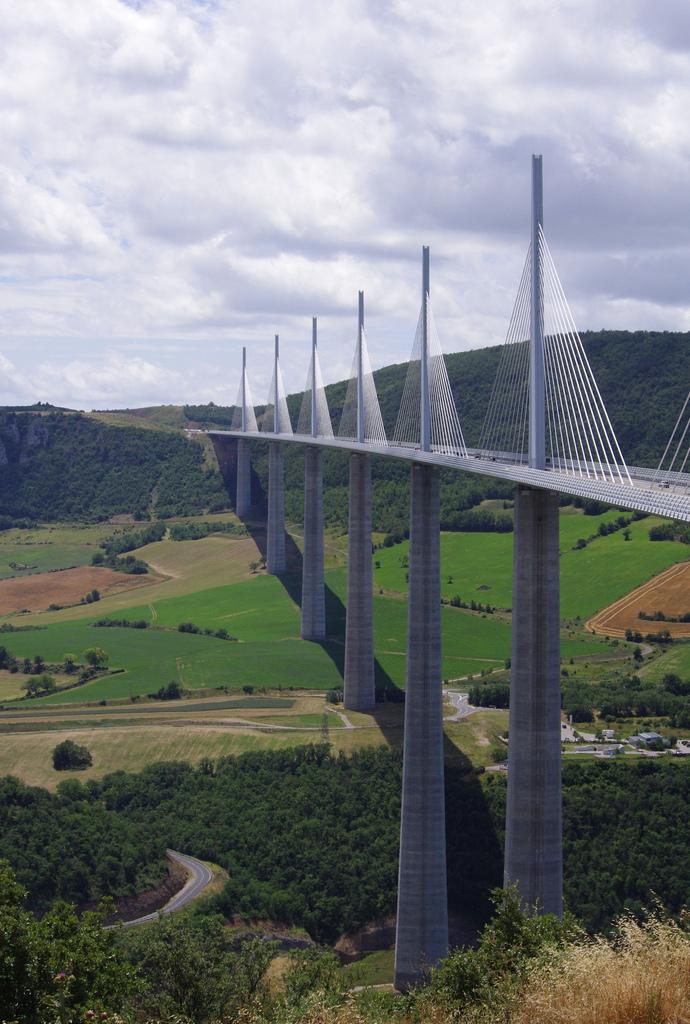The Millau Viaduct was born out of a growing tangle of traffic on the route from Paris to Spain. The worst area was the pass through the Tarn River gorge near the town of Millau. The first plans were drawn up in 1987. Seven architect and eight engineering firms were consulted on how to solve the traffic issue. In 1996 the government solicited designs and the final verdict favored a cable-stayed design with multiple spans.
The first great challenge was deciding on the route. Of the four options the route west of Millau, which was supported by local opinion, presented the most challenging technical difficulties, especially the issue of crossing the valley of the Tarn. The other routes were eliminated for a variety of reasons including insurmountable technical issues and negative environmental impact.
Once the route was chosen, contractors with a wide range of expertise in technical, architectural and landscape design submitted five choices to a panel of artists and experts who made the final decision.
The 2.4 kilometer (1.5 mile) bridge’s construction cost was just over €400 million ($600 million) and utilized 130,000 cubic meters (170,000 cubic yards) of concrete, 20,000 tonnes (222 short tons) of steel for reinforcing concrete, and 5,500 tonnes (6,000 short tons) of pre-stressed steel for the shrouds and cables. The builder stated the bridge would last 120 years.
Many records were broken in this project which has six central spans and seven masts and a metallic deck that weights 36,000 tonnes (40,000 short tons). These include the highest pylons in the world (averaging 250 meters or 810 ft); the highest bridge tower in the world (mast top at 343 meters or 1,125 ft); the highest road bridge deck in Europe (270 meters or 890 ft) among others.
In 2005 the bridge opened ahead of schedule for business and in the same year carried home the “Holy Grail” of design and advertising, the D&AD Gold Award.
Related articles on IndustryTap:






